Kasagidera Temple
- About
- Location & Admission
- Photo Gallery
-
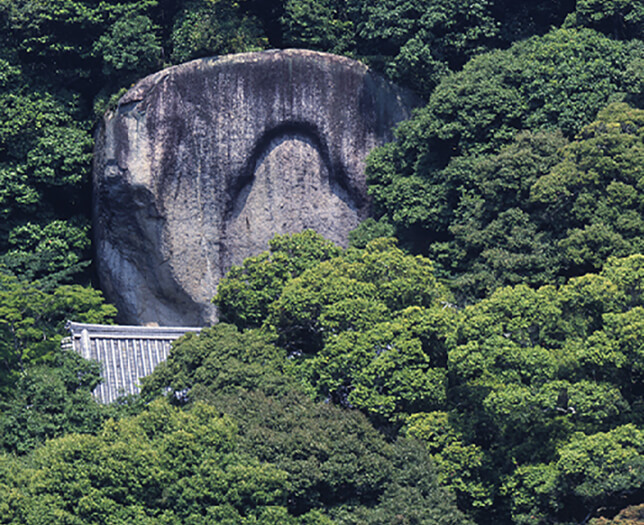
-
Opening hours 9:00-16:00 Entrance fee Individual: Adult (High school student or older) 300yen, (Middle school student 100yen, Elementary school student or under No charge
Group: Adult (over 30 people) 270yen, High school student (School trip) 100yen, Middle school student (School trip) 50yen, Elementary school student (School trip) 30yenTEL 0743-95-2848 Address 29 Kasagiyama,Kasagi-cho,Souraku-gun,Kyoto,619-1303 Official Web http://www.kasagidera.or.jp/ Access
About 45 minutes on foot from JR Kansai Line "Kasagi" starion./ About 15 minutes by taxi from JR Kansai Line "Kasagi" station.
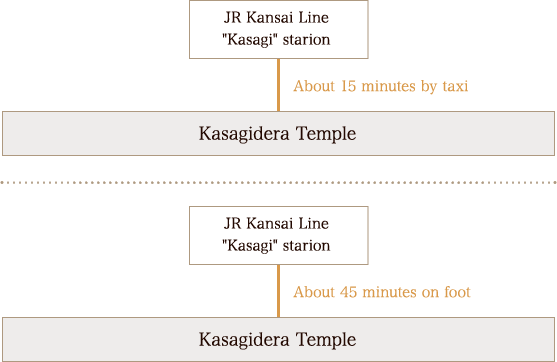
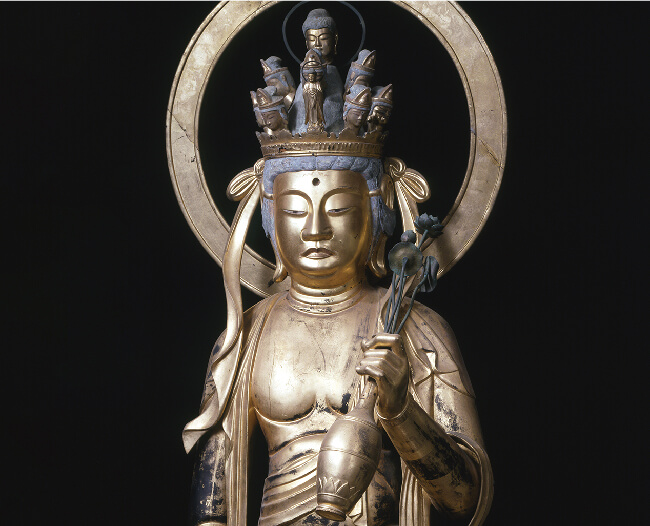

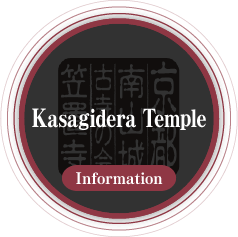
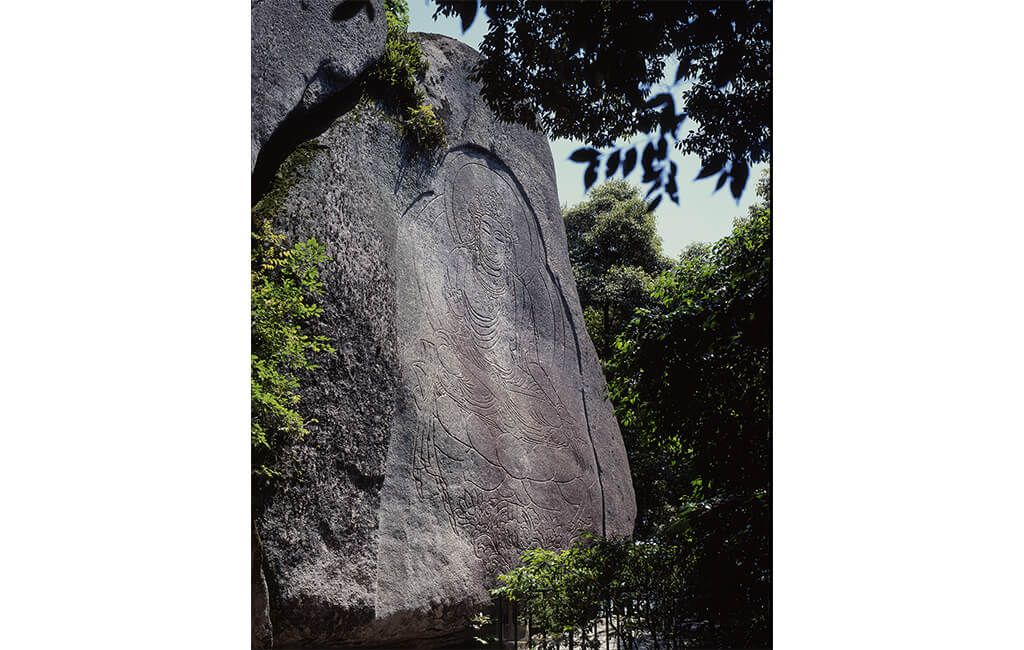
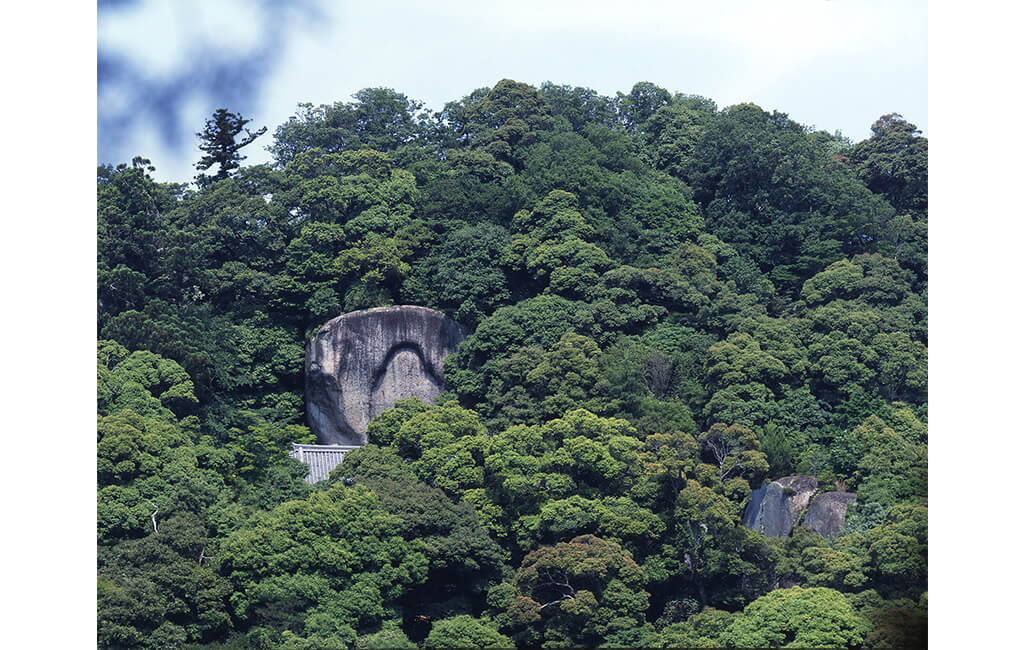
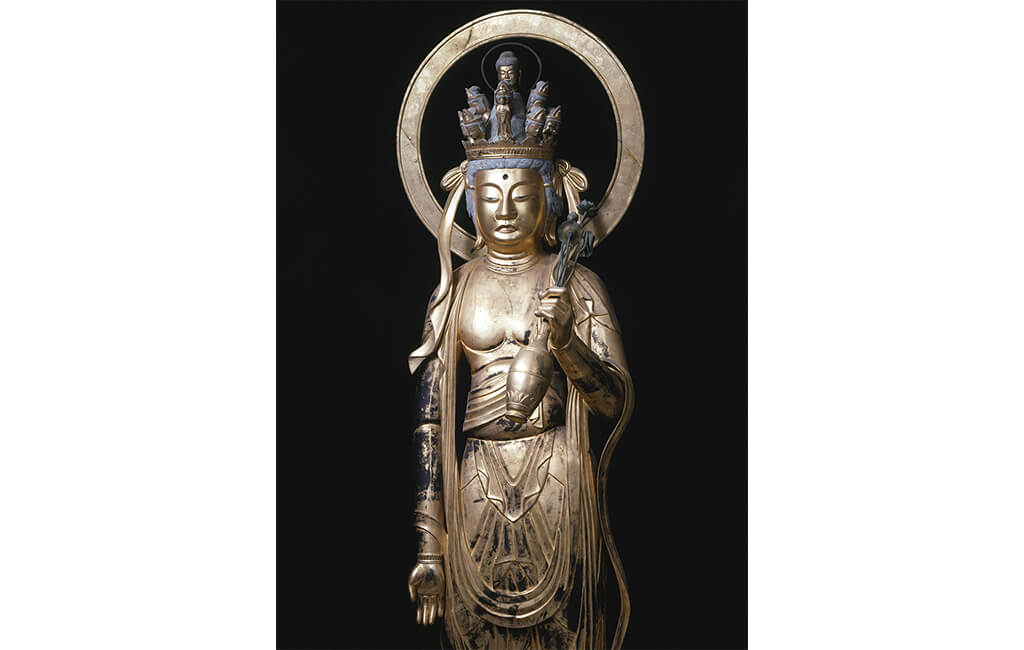
South of the Kizu River, in a secluded mountain area atop the 288 m–high peak of Mount Kasagi, is Kasagidera Temple. The temple is surrounded by a rugged terrain of mountain paths and giant boulders and traces its origins back over 2,000 years to when the boulders themselves were considered sacred. Today, the temple is best known for its enormous 16 m–tall Magaibutsu (Buddhist figures carved into boulders). The principal deity of this temple is unique in that it is not a statue enshrined in the main hall, but one of the Magaibutsu carvings, namely the Maitreya (Miroku Bosatsu). Miroku Bosatsu is a bodhisattva who will arrive on earth sometime in the future to achieve complete enlightenment and save humanity. Due to its unforgiving terrain, Kasagidera Temple has long been a physical and spiritual training ground for Buddhist monks. Visitors today can walk on these same paths and training routes.
History
Kasagidera Temple’s roots can be traced back over two thousand years ago. A fragment of a Yuhi-style stone sword (a type of sword used in the Yayoi period, approx. 300 BCE to 300 CE) was discovered in the area, hinting at the ancient origins of the temple. Temple structures and residences in this area were first established about thirteen hundred years ago. Around that time, Roben, the high priest and founder of nearby Todaiji in Nara, and his disciple Jitchu carved various consecrated Buddhist statues into the rock faces here. Kasagidera Temple then garnered a reputation as an intensive spiritual training ground for monks.
By 1052, the pessimistic Mappo ideology had gained popularity in Japan, bringing many devotees to Kasagidera Temple. According to this Buddhist theory, there will come a time when the teachings of the Buddha are forgotten, and the world will deteriorate into universal suffering. Many followers of Buddhism at the time turned to Kasagidera’s Buddhas that were carved into rock as a symbol of the Buddha’s lasting presence.
There was also a period in 1191 when the famous Buddhist scholar monk Jokei (1155–1213) resided at Kasagidera Temple. It is thought that he came to Kasagidera Temple to concentrate on his studies, but Jokei was very active while he resided at the temple, leading a movement to rebuild temples and foster reverence for Maitreya (Miroku Bosatsu). His efforts aided Kasagidera Temple in growing to the height of its prosperity as a mountaintop religious center.
In 1331, the emperor at the time fled to Kasagidera Temple after a failed plot to reclaim power by overthrowing the shogunate (feudal military government). A month-long battle ensued in which, eventually, all of Mount Kasagi was set ablaze. Kasagidera Temple was also consumed in this inferno. The temple recovered somewhat in the following centuries, but by the Edo period (1603–1868) it had fallen into ruin, and by 1868 was completely deserted. A priest named Joei began recovery efforts in 1876, and after twenty years, the temple was at last restored to its current state.
Treasures and Artifacts
Today, the temple is best known for its enormous 16 m Magaibutsu (Buddhist figures carved into boulders). The temple’s main Magaibutsu has eroded over time, but others remain in sharp relief. There is also a reliquary with over twenty Important Cultural Properties, including an Eleven-Headed Kannon statue, scrolls, and other historical artifacts.
Kasagidera Temple’s Bronze Bell (Gedatsusho, the bell of liberation)
Cast in 1196 in the Chinese style, Kasagidera Temple’s bell is a designated Important Cultural Property of Japan. This bell has six notches at its base; it is the only bell in Japan with this shape. It was cast and donated to Kasagidera Temple by the renowned monk Chogen as a gesture to Jokei (1155–1213), the influential Buddhist monk scholar who was residing at Kasagidera Temple at the time.
According to temple legend, when Jokei was residing at Kasagidera Temple the earth suddenly rose up in a mound before him and a servant of Enma, the lord of the underworld, appeared. The servant told Jokei that Enma had heard of his eminence and wisdom, and sent the servant to fetch Jokei so Enma could learn more about Shaka Nyorai, the historical Buddha. Jokei agreed and spoke with Enma at length about Shaka Nyorai. As he did so, Enma was so impressed by Jokei’s eloquence that bestowed a gift of gold dust to Jokei. This gold dust, it is said, was used in the casting of Kasagidera Temple’s bronze bell.